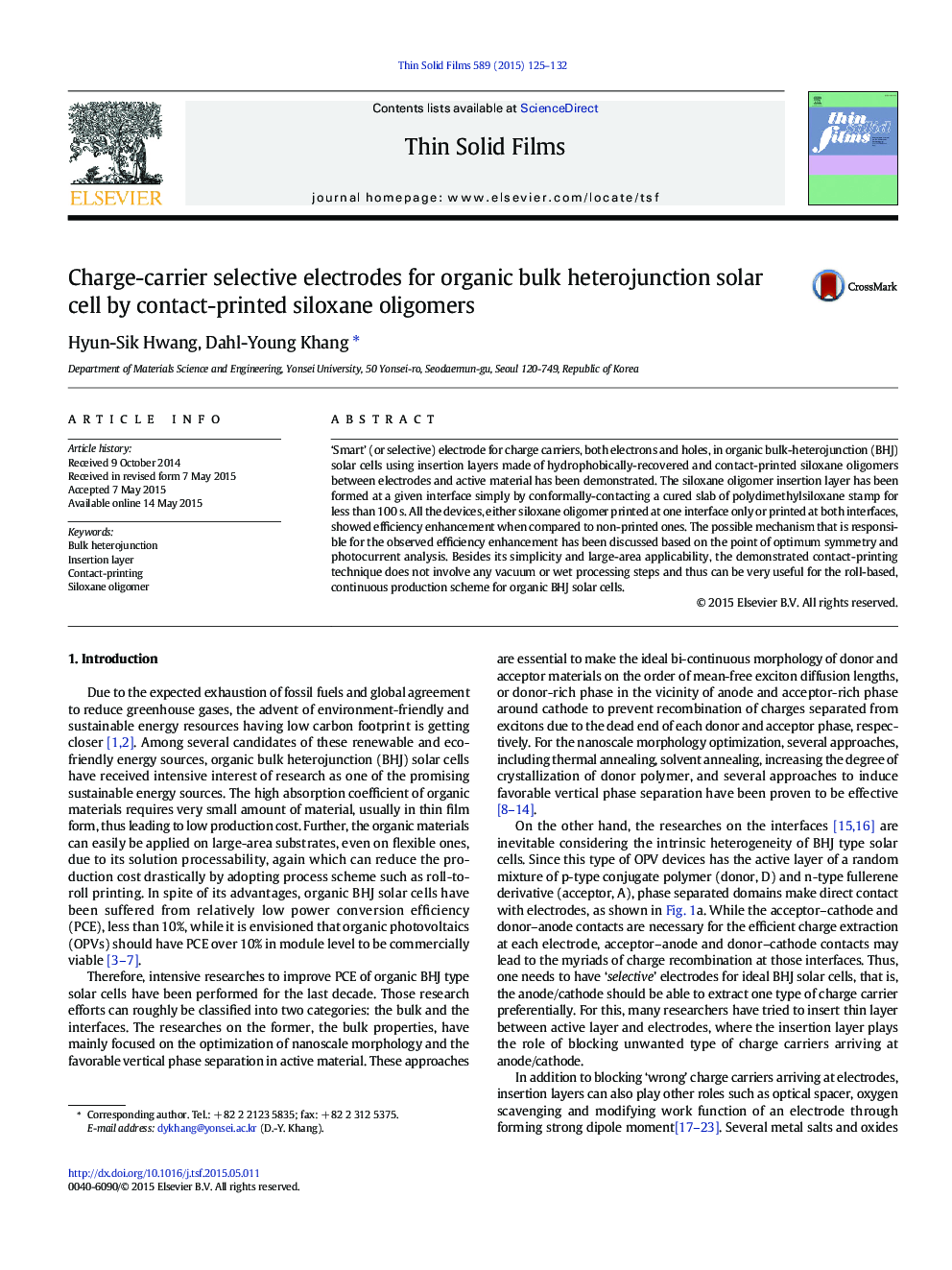| Article ID | Journal | Published Year | Pages | File Type |
|---|---|---|---|---|
| 1664690 | Thin Solid Films | 2015 | 8 Pages |
•Carrier-selective insertion layer in organic bulk heterojunction solar cells•Simple contact-printing of siloxane oligomers improves cell efficiency.•Printed siloxane layer reduces carrier recombination at electrode surfaces.•Siloxane insertion layer works equally well at both electrode surfaces.•Patterned PDMS stamp shortens the printing time within 100 s.
‘Smart’ (or selective) electrode for charge carriers, both electrons and holes, in organic bulk-heterojunction (BHJ) solar cells using insertion layers made of hydrophobically-recovered and contact-printed siloxane oligomers between electrodes and active material has been demonstrated. The siloxane oligomer insertion layer has been formed at a given interface simply by conformally-contacting a cured slab of polydimethylsiloxane stamp for less than 100 s. All the devices, either siloxane oligomer printed at one interface only or printed at both interfaces, showed efficiency enhancement when compared to non-printed ones. The possible mechanism that is responsible for the observed efficiency enhancement has been discussed based on the point of optimum symmetry and photocurrent analysis. Besides its simplicity and large-area applicability, the demonstrated contact-printing technique does not involve any vacuum or wet processing steps and thus can be very useful for the roll-based, continuous production scheme for organic BHJ solar cells.
